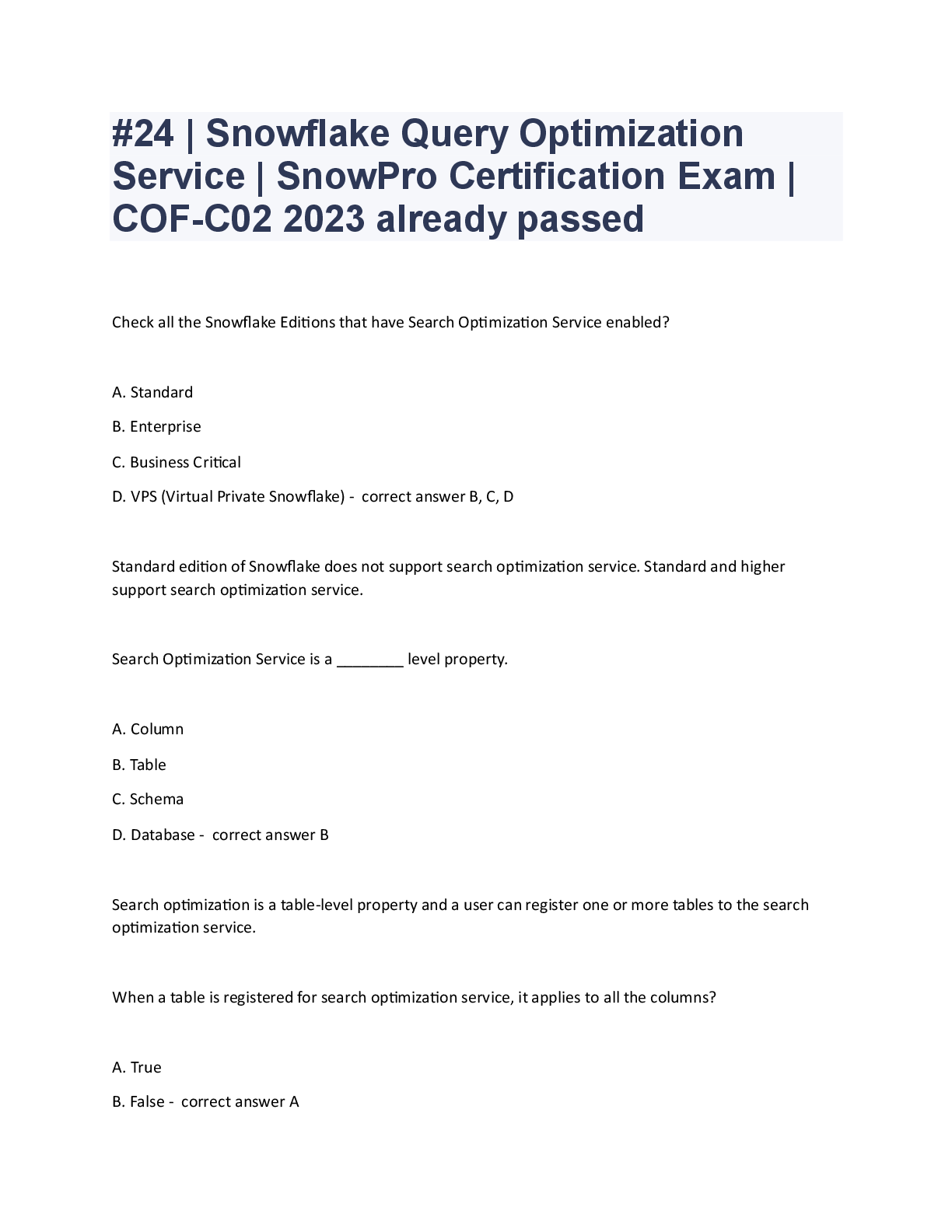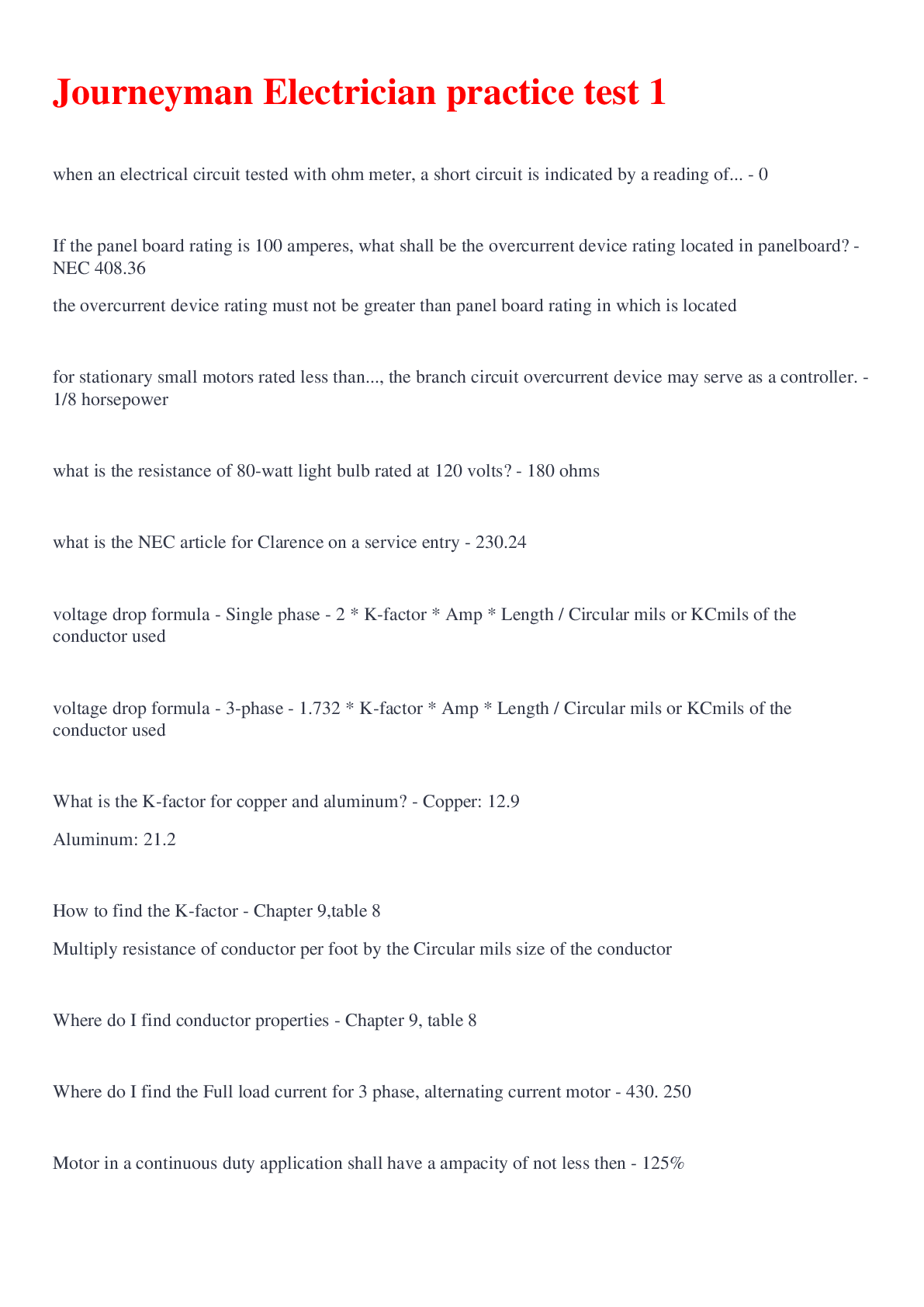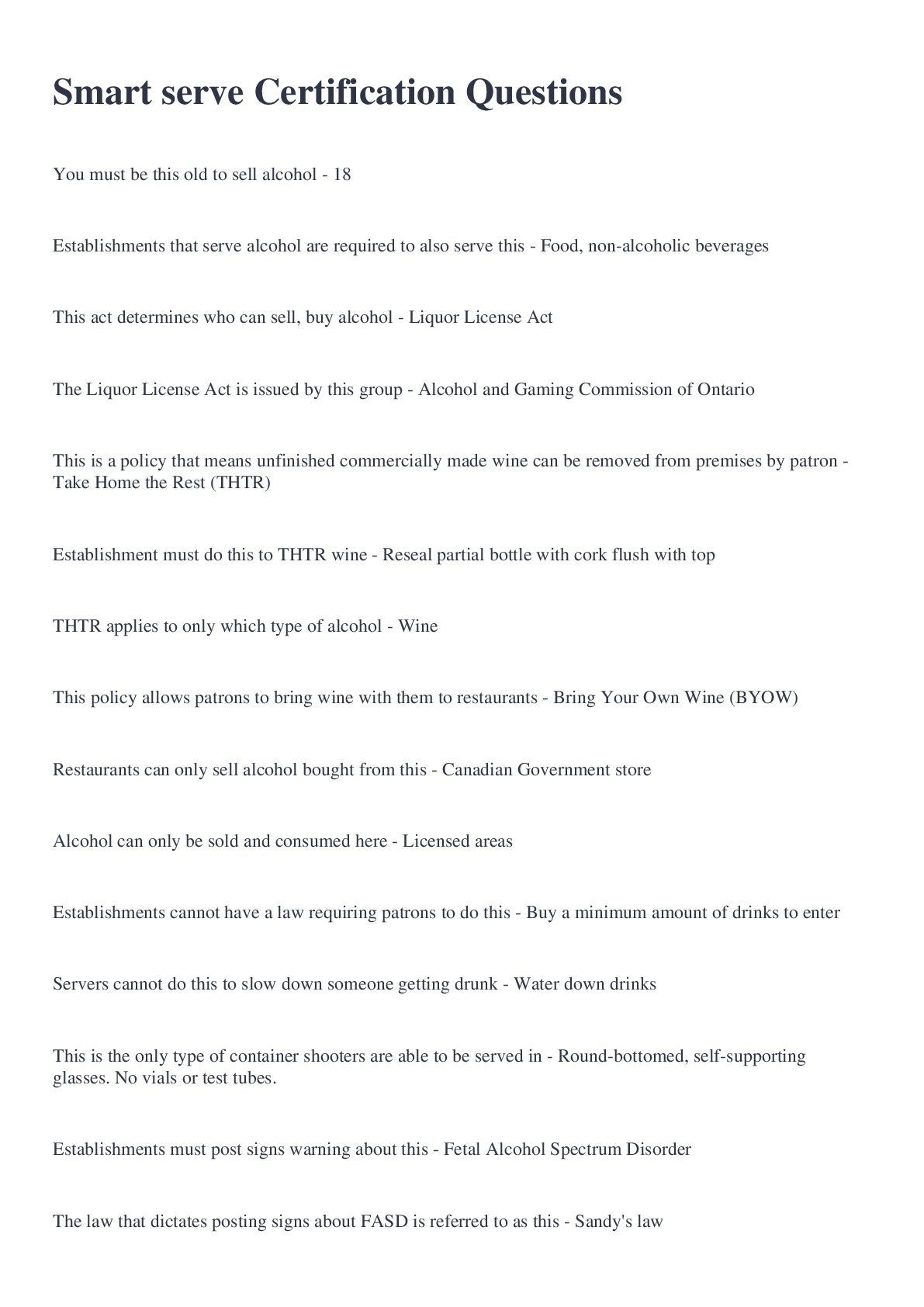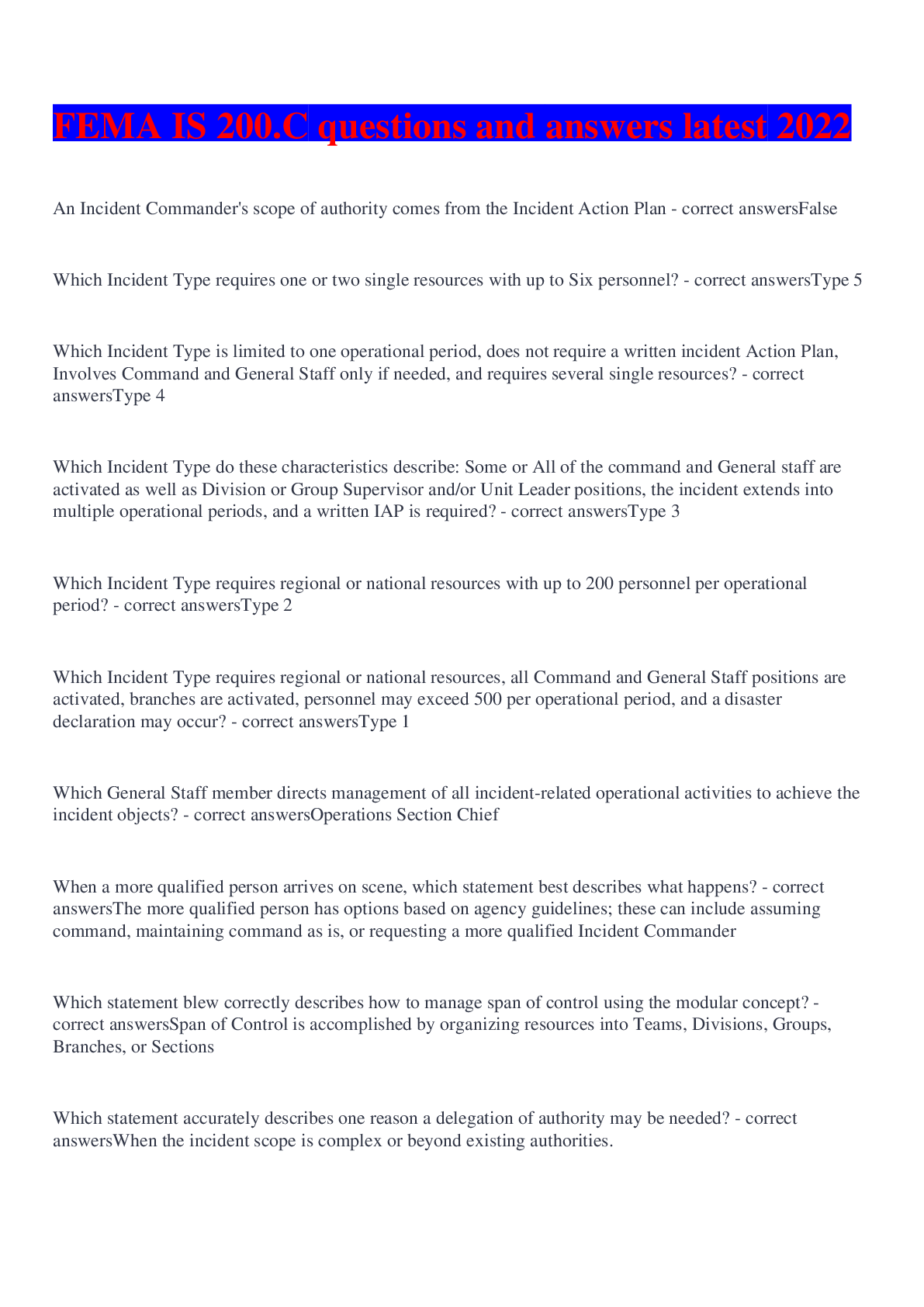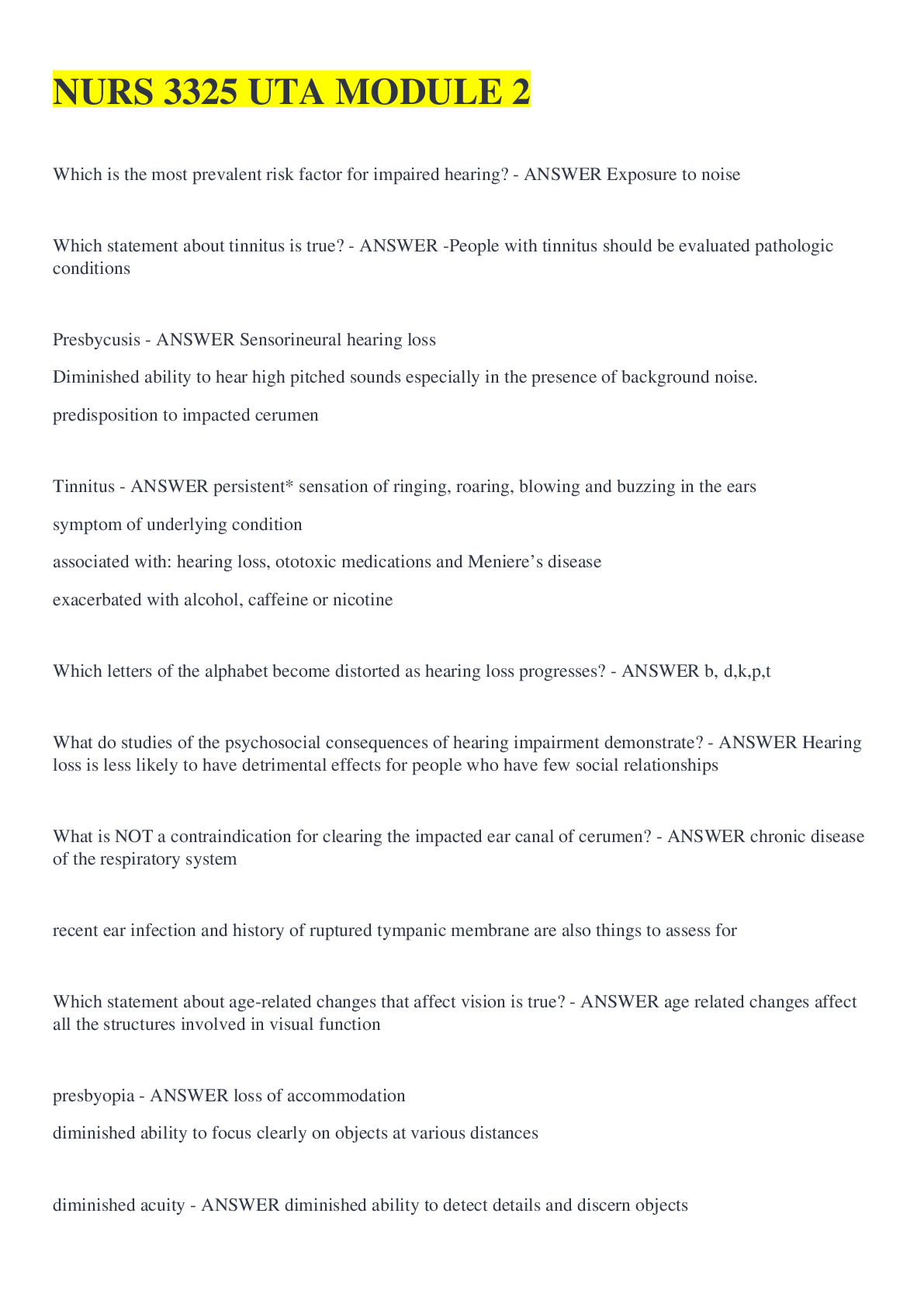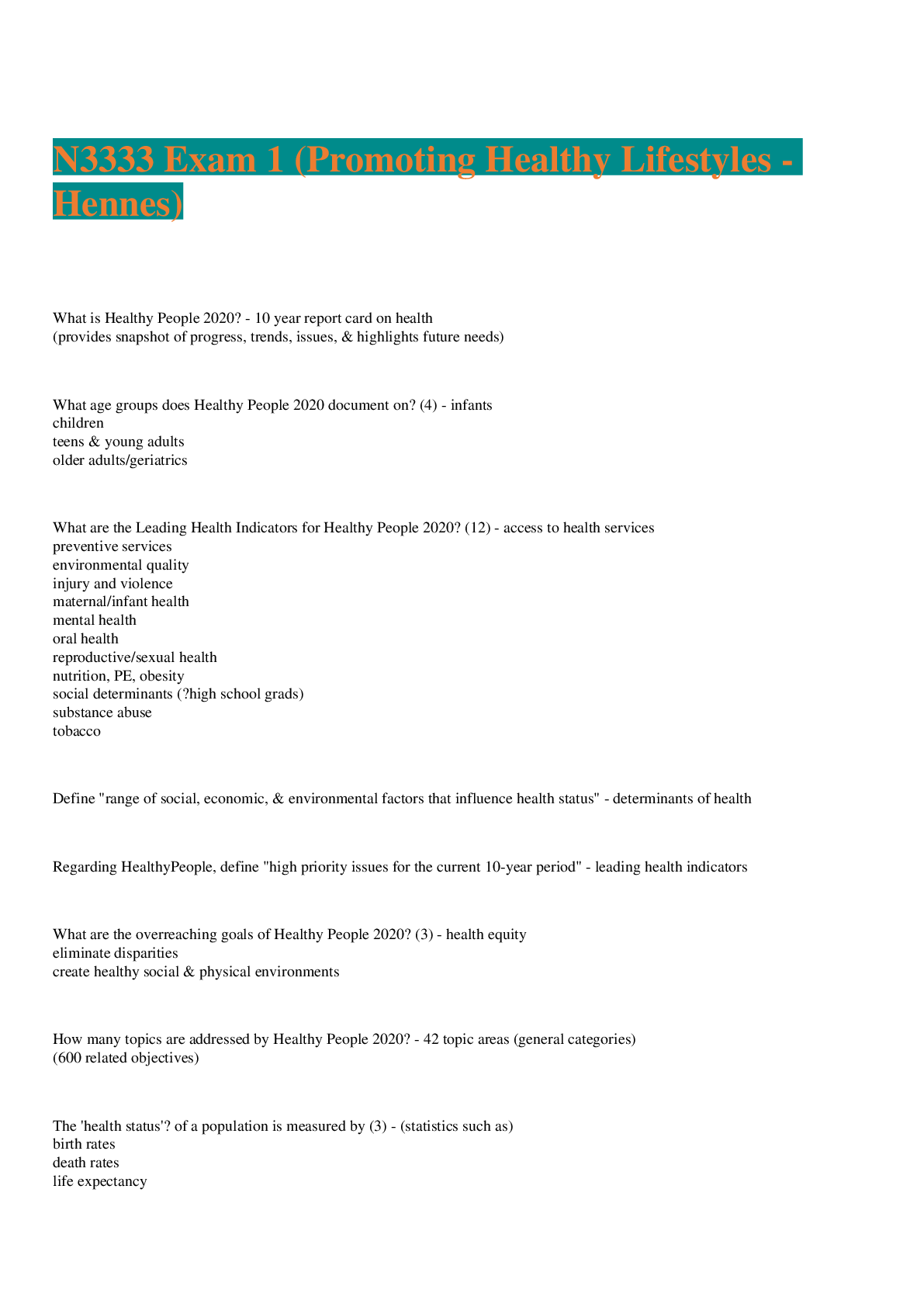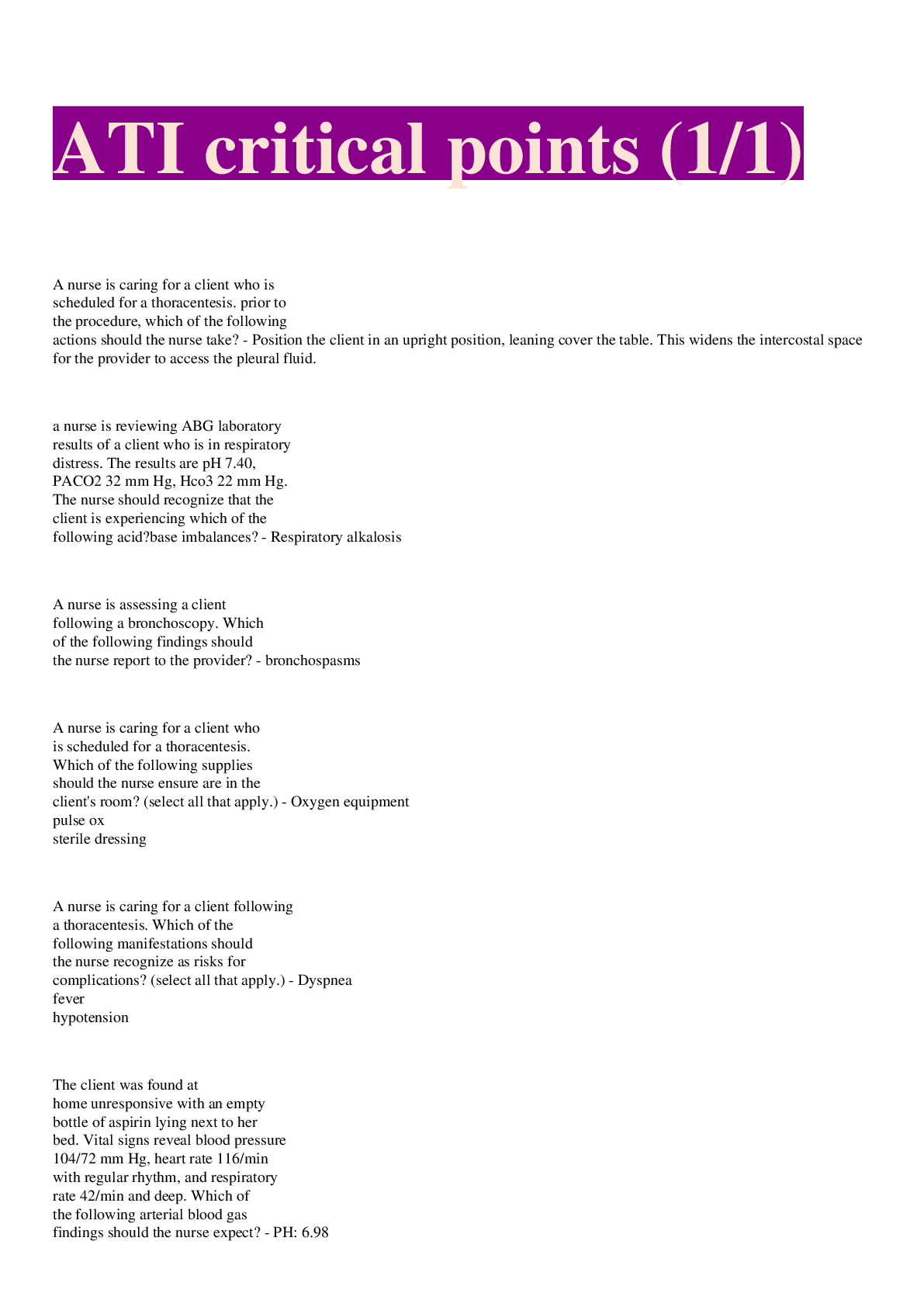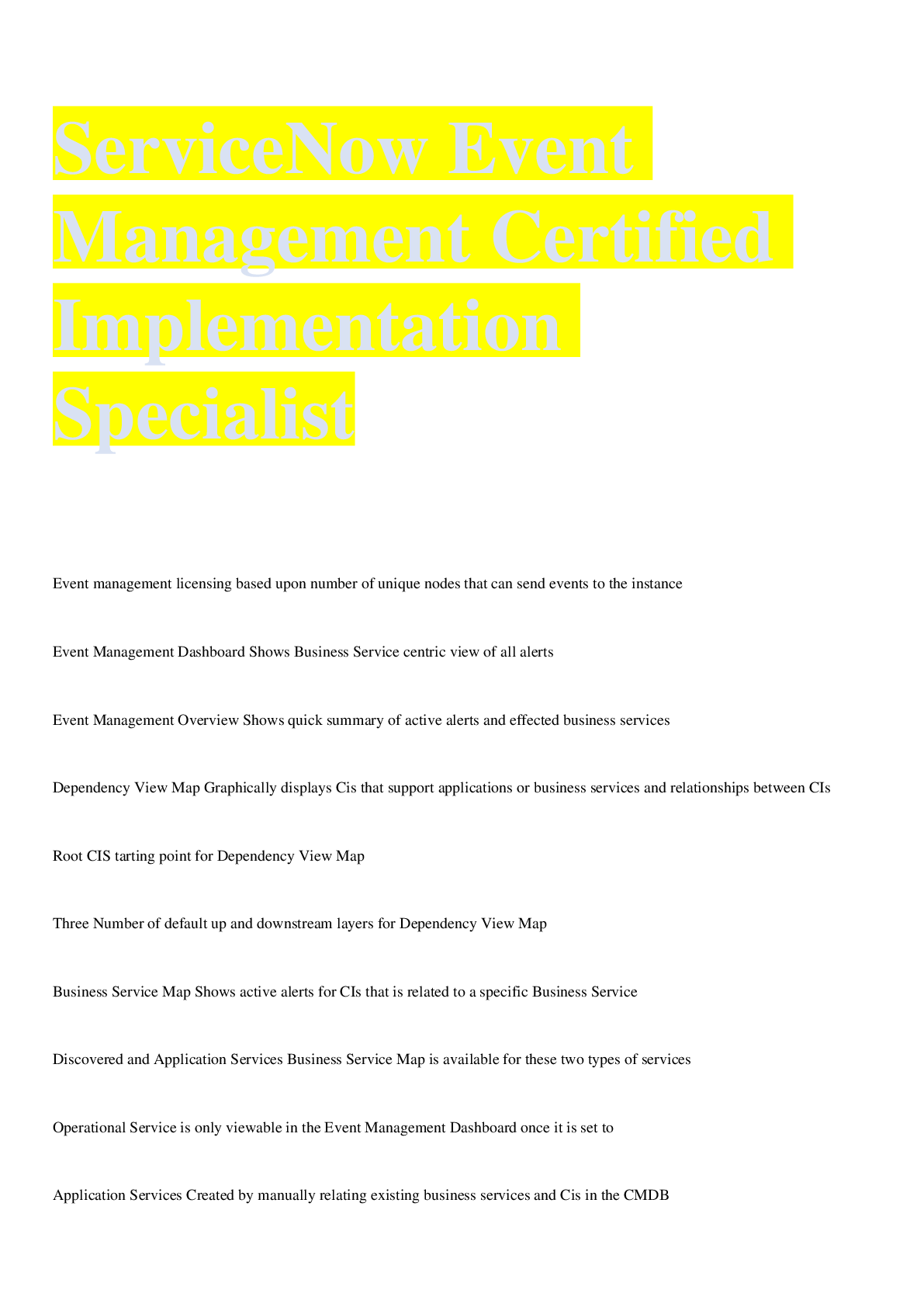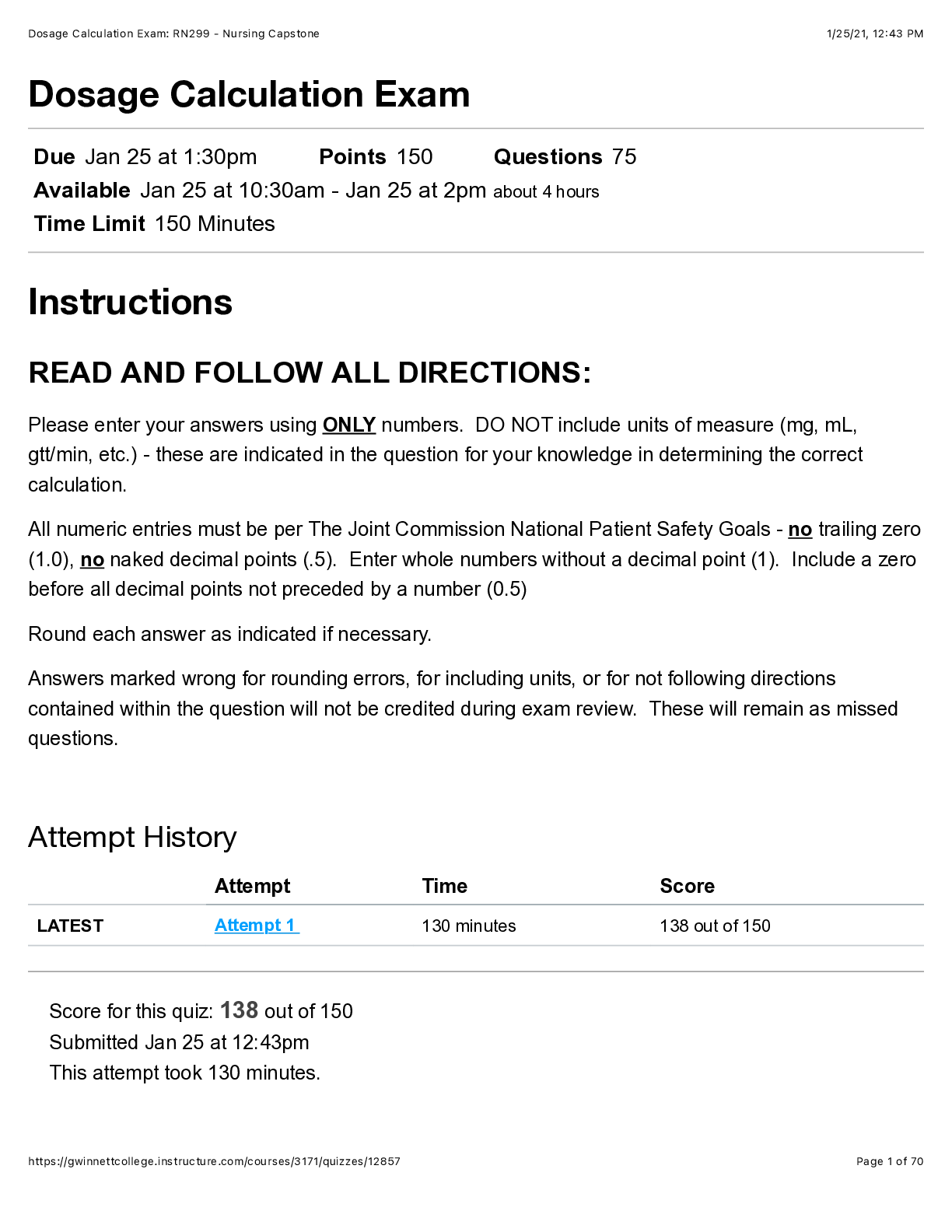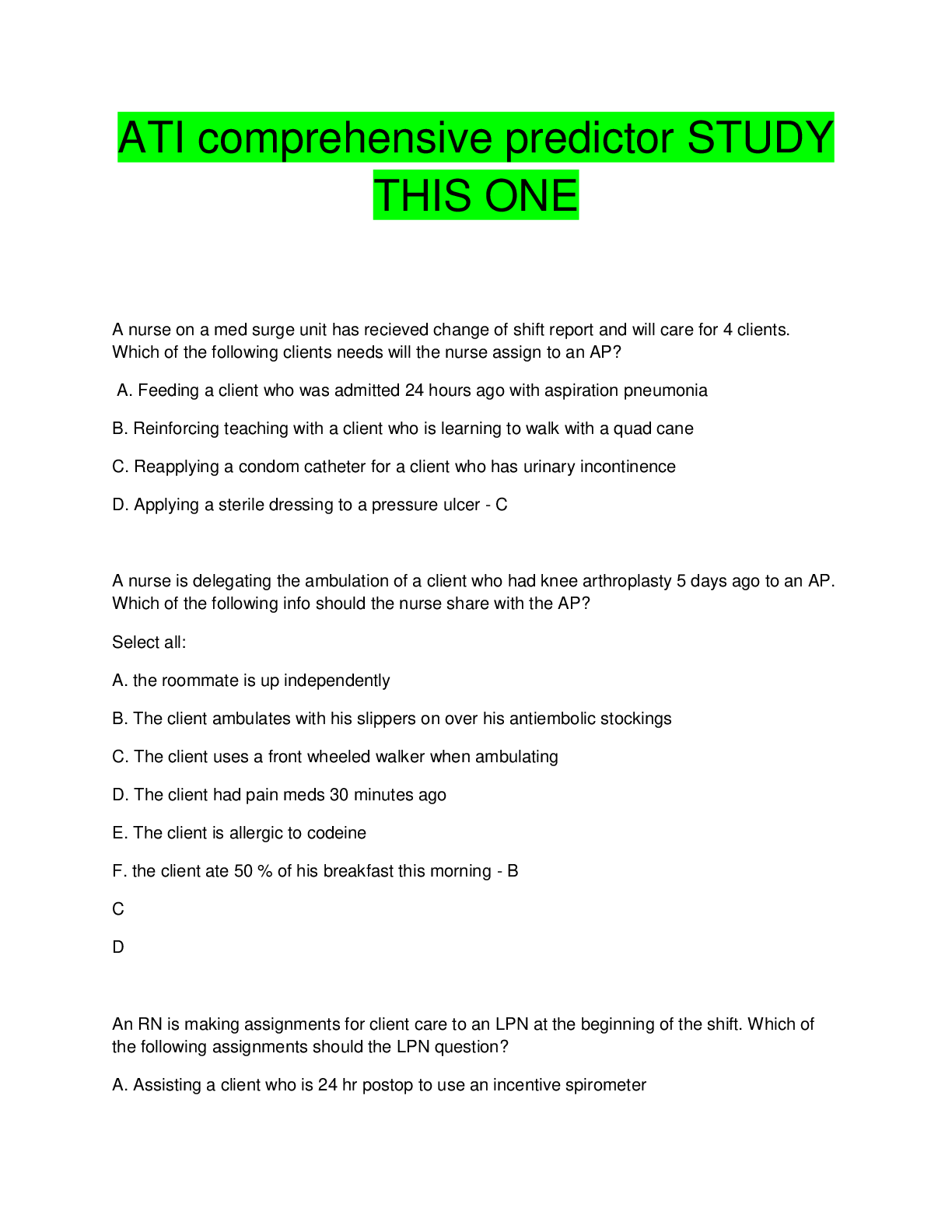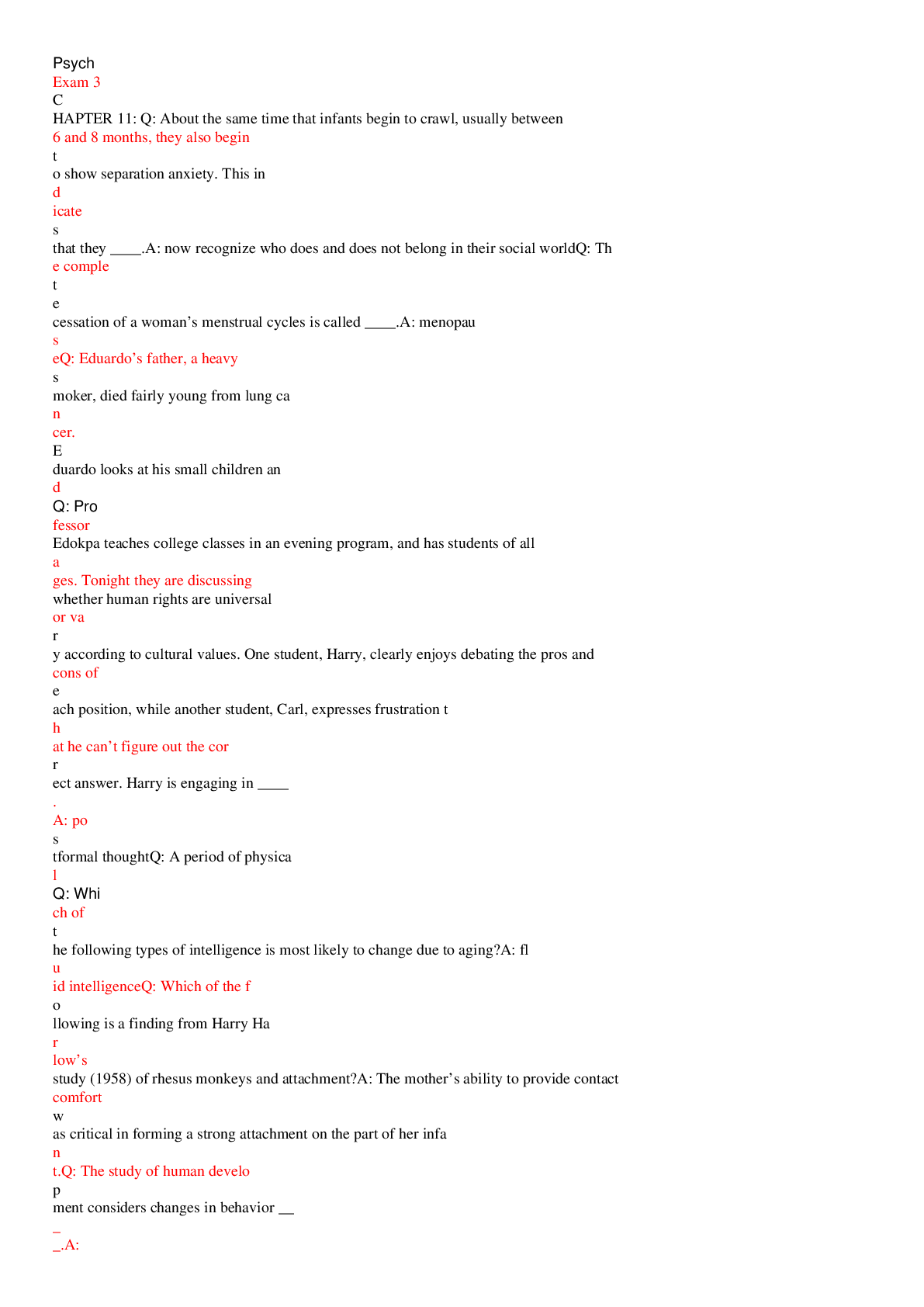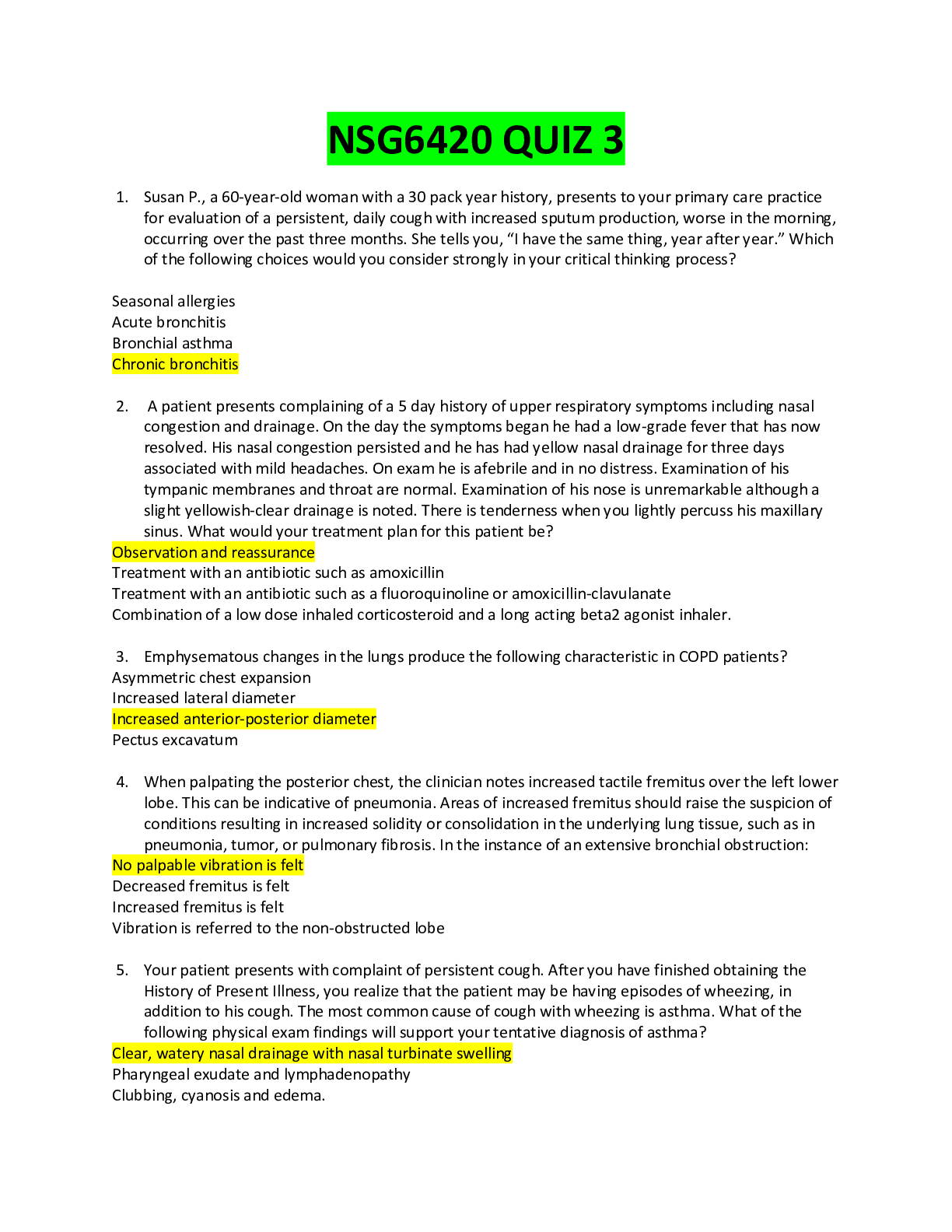Maryville NURS 611 Exam 2 QUESTIONS WITH COMPLETE SOLUTIONS
Document Content and Description Below
Neurogenic Diabetes Insipidus Swelling commonly seen after traumatic brain injury (TBI) can lead to dangerous increases in intracranial pressure. This increase can push on the pituitary leading to de... creased ADH secretion = polyuria. Parasympathetic Nervous System Mediated by acetylcholine; controls rest and digest; conserves energy and the body's resources; controls everyday metabolism Sympathetic Nervous System Mediated by catecholamines (epi and norepi); prepares the body for fight or flight; mobilizes energy stores --> releases insulin; redistributes blood flow - increased to muscles, decreased to GI/integumentary Focal brain injury Specific lesions that are observable on imaging; epidural or subdural hemorrhage Diffuse brain injury Injuries involving widespread areas of the brain; may be difficult to detect and define because damage is often microscopic; hypoxia is the number 1 cause; other causes include meningitis or encephalitis Autonomic Dysreflexia (below the lesion) Faulty control of sweating because the hypothalmus is unable to regulate body heat due to SNS damage; pale, cool skin Autonomic Dysreflexia (general) A complication occurring in a person who has a spinal cord injury above T6 Autonomic Dysreflexia (above the lesion) Paroxysmal hypertension (up to 300 mmHg systolic), piloerection, and sweating with flushing of the skin; headache, bradycardia Delirium Acute onset, short duration; often associated with UTI, resolves with treatment; attention and orientation are impaired; patient can be agitated, disorganized, and have hallucinations Dementia Usually insidious with chronic slow decline; attention and orientation are often intact early in the progression; no overt behavioral signs early Alzheimer Disease Leading cause of dementia; greatest risk factors are age and family history; specific diagnosis is made by postmortem examination Stroke (incidence) Two times higher in blacks than whites; tends to run in families; most common are ischemic Stroke (Risk Factors) Hypertension, Insulin resistance and diabetes mellitus, High total cholesterol or low high-density lipoprotein (HDL) cholesterol level, elevated lipoprotein-A level, Heart disease and peripheral vascular disease, Polycythemia and thrombocythemia, Atrial fibrillation, Postmenopausal hormone therapy, High sodium intake, >2300 mg; low potassium intake, <4700 mg, Smoking, Physical inactivity, Obesity BMI >30, Chronic sleep deprivation Right-sided homonymous hemianopsia Visual field loss to the side of the vertical midline. In this case left-sided peripheral vision will be intact, but right side is lost Middle cerebral artery stroke s/s Contralateral hemiparesis or hemiplegia (upper extremities greater than lower); expressive disorder with anomia (inability to name objects); nonfluent aphasia, comprehension defects; Cheyne-Stokes respirations Guillain-Barre An autoimmune disease that is preceded by an infection; with the outbreak of Zika, there has been an increase in cases; weakness plateaus around week 4 in most cases and strength can be regained Guillain-Barre (picture) Multiple Sclerosis Chronic inflammatory disease involving degeneration of myelin; there is usually a clinically isolated syndrome with a single episode of neurologic dysfunction (often follows pregnancy) Multiple Sclerosis (Clinical manifestations) Initially 90% of patients present with relapsing/remitting course that progresses over 10-20 years; 10% present with primary progressive course; once walking problems develop, disease progression occurs quickly. Multiple Sclerosis (Picture) Myasthenia Gravis A chronic autoimmune disease mediated by acetylcholine receptor antibodies that act at the neuromuscular junctions Myasthenia Gravis (Clinical Manifestations) Exertional fatigue that improves with rest; history of recurrent respiratory infections; diplopia, ptosis, and ocular palsies; facial droop, flat affect; difficulty chewing and swallowing Parkinson's Disease (characteristic appearance) Resting tremor, pill-rolling tremors, bradykinesia/akinesia (poverty of movement), rigidity. A wide-eyed, unblinking, staring expression; shuffling steps; arms flexed, held stiffly at the side; trunk is bent forward Acute Pain Transient, sudden onset; Clinical signs: Increased pulse rate, elevated blood pressure, increased respiratory rate, diaphoresis, dilated pupils Chronic Pain Prolonged and persistent; few overt s/s due to adaptation; most common form is persistent low back pain Glaucoma Leading cause of visual impairment and blindness; family history is a risk factor; increased introcular pressure causes optic nerve degeneration Open-angle Glaucoma Most common; obstruction is in the aqueous flow Closed-angle Glaucoma The iris pushes into the lens, blocking aqueous flow Cardinal Signs of Inflammation Edema, warmth, redness, and pain Edema Vasodilation causes slower blood velocity which increases local blood flow; increased flow and capillary permeability result in leakage of plasma and swelling Warmth and redness Increased concentration of RBC at the site of inflammation; chemotactic factor effects the inflammatory response by directing leukocytes to the inflamed area Pain Physiologic response that allows us to know when damage is done Inflammatory response One main purpose is to prevent infection of the injured tissue Phagocytosis Opsonization, engulfment, fusion with lysosomal granules, destruction of the target Opsonization Phagocytes recognize the target and adhere to it Resolution When cellular damage occurs and it is minor with no significant complications; it is possible for the injured tissues to return to normal structure and function Humoral immunity Mediated by B-lymphocytes; works in the bodily fluids before an infectious agent has entered the cell; antibody circulates in the blood and binds to antigens on infectious agents Cellular Immunity T cells differentiate during an immune response and develop the ability to react directly with antigens on infectious agents Types of T cells Some stimulate other leukocytes through contact or through cytokine secretion; others develop into T-cytotoxic cells that kill targets Immune deficiency and T-lymphocytes A patient with this problem needs screening for malignancy Active Immunity Produced by the individual after exposure; either naturally occurring or via vaccines Passive Immunity Occurs when preformed antibodies are transferred from a donor to the recipient; naturally occurring as the mother passes antibodies to her breastfed baby or passive via immunotherapy IgG The most abundant class of immunoglobulins; They constitute 80% to 85% of those circulating in the body and account for most of the protective activity against infections IgA Molecules found in bodily secretions; there is a secretory piece that is attached inside mucosal epithelial cells; may function to protect these immunoglobulins against degradation by enzymes also found in the secretions IgM The largest of the immunoglobulins. It is the first antibody produced during the initial, or primary, response to antigen. IgE The least concentrated of any of the immunoglobulin classes in the circulation; it appears to have very specialized functions as a mediator of many common allergic responses Antibodies Protect the host from bacterial invasion; bind to toxins produced by bacteria and prevent their interaction with cells; neutralizes the bacteria's biologic effects Routes of antigen administration Each route stimulates a different lymphocyte containing tissue, resulting in different types of cellular and humoral immunity Type I hypersensitivity Mediated by antigen-specific IgE and the products of tissue mast cells; causes most common allergies; anaphylaxisis Type II hypersensitivity Characterized by a specific cell or tissue being targeted; antibodies bind to antigens on the cell surface Grave's disease Type II hypersensitivity reaction; autoantibody binds to and activates receptors for TSH receptors which control the production thyroxine by the thyroid; In this way the antibody stimulates the thyroid cells to produce thyroxine. Alloimmune reaction to ABO-mismatched blood Type II hypersensitivity reaction; Because individuals with type O blood lack both types of [Show More]
Last updated: 2 years ago
Preview 1 out of 7 pages
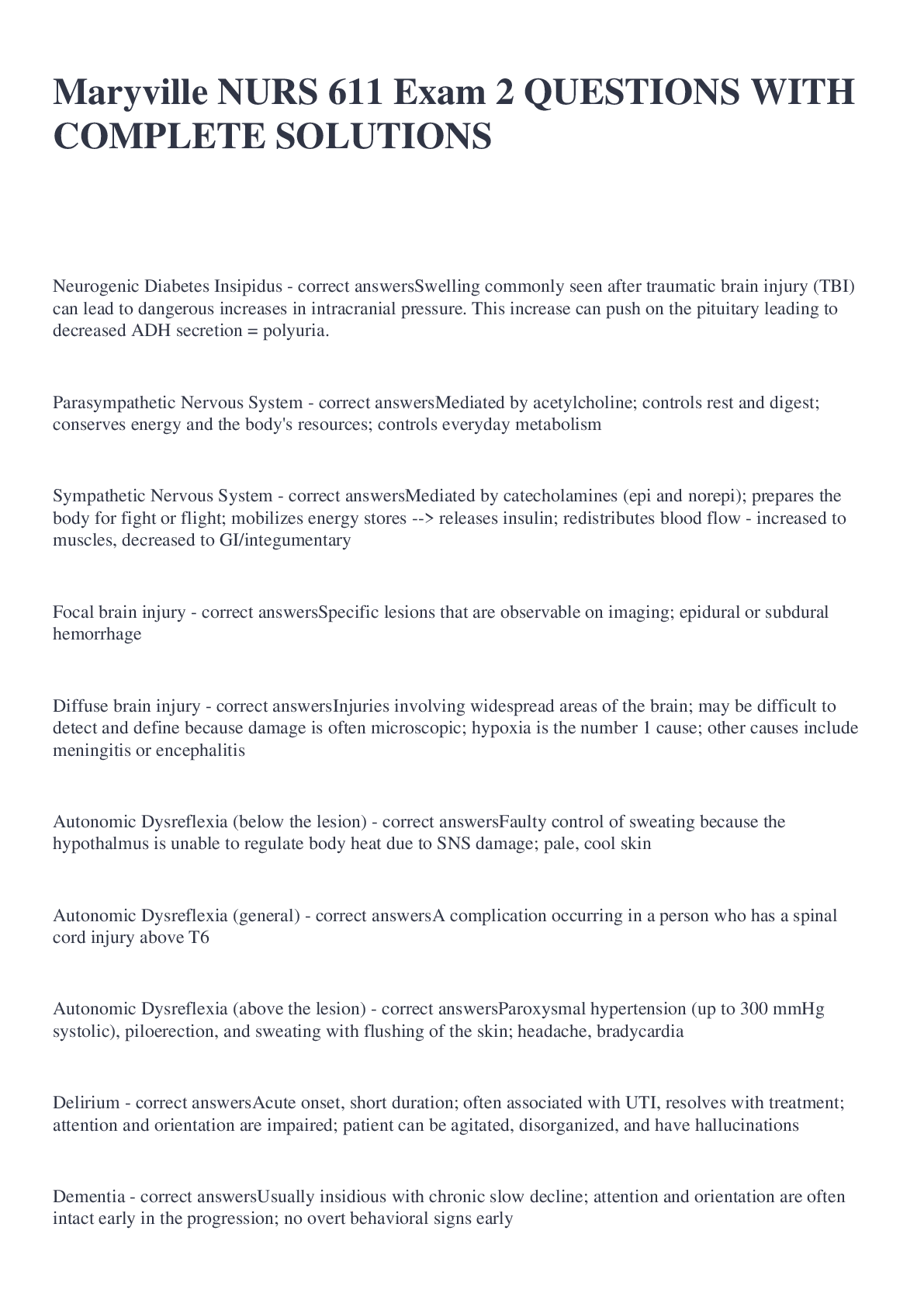
Buy this document to get the full access instantly
Instant Download Access after purchase
Buy NowInstant download
We Accept:

Reviews( 0 )
$13.00
Can't find what you want? Try our AI powered Search
Document information
Connected school, study & course
About the document
Uploaded On
Nov 15, 2022
Number of pages
7
Written in
Additional information
This document has been written for:
Uploaded
Nov 15, 2022
Downloads
0
Views
52

